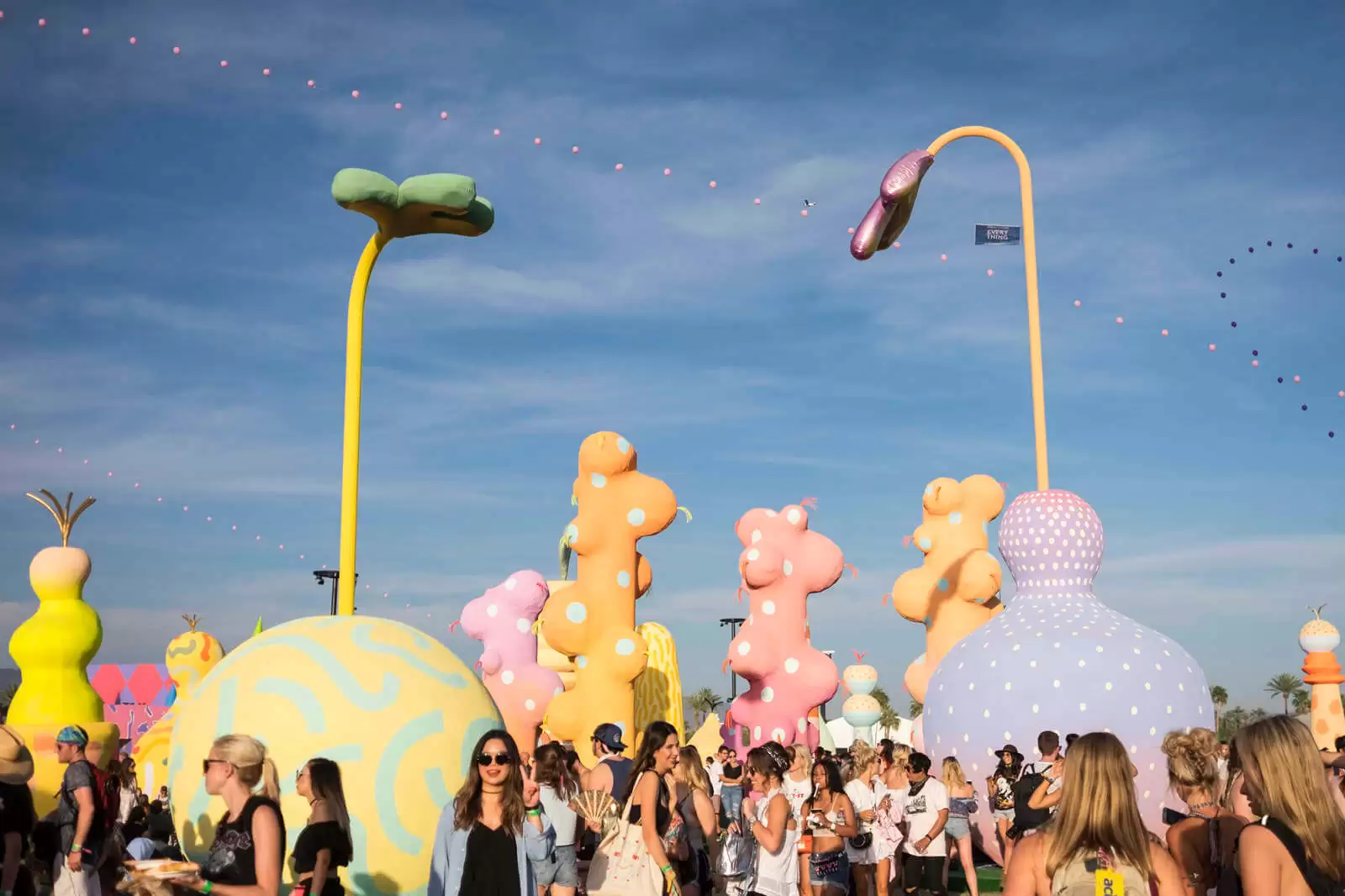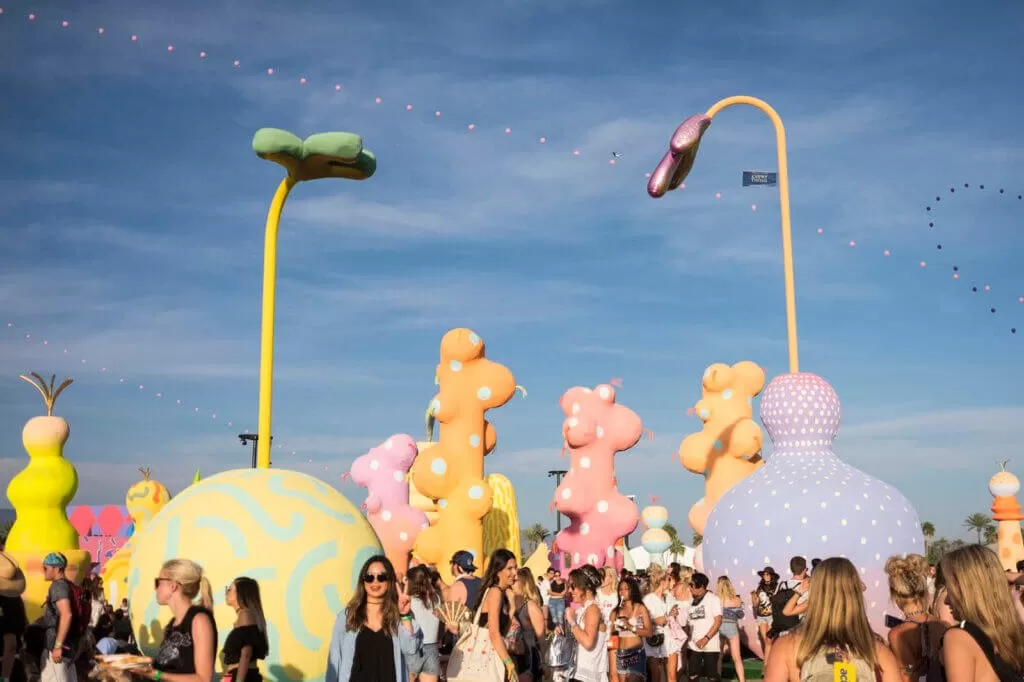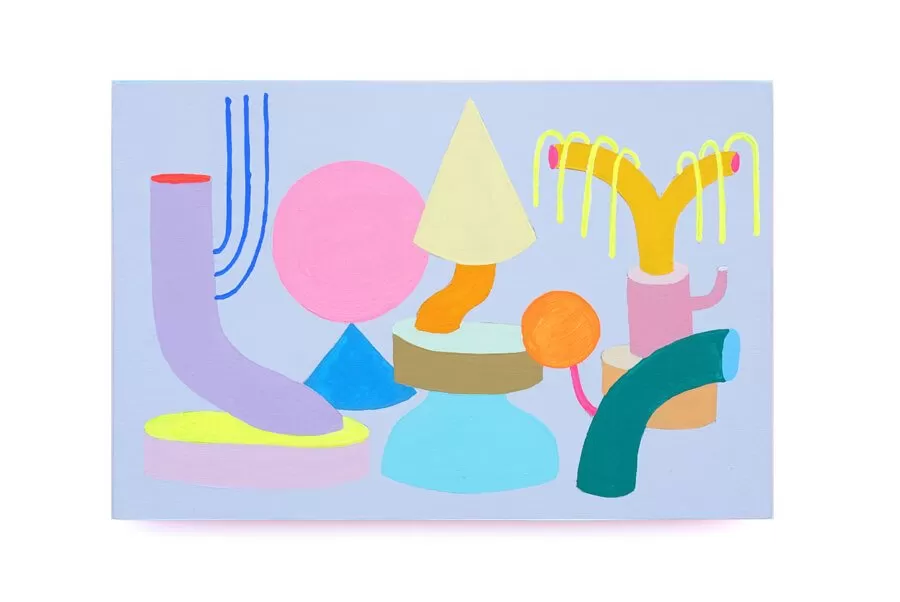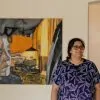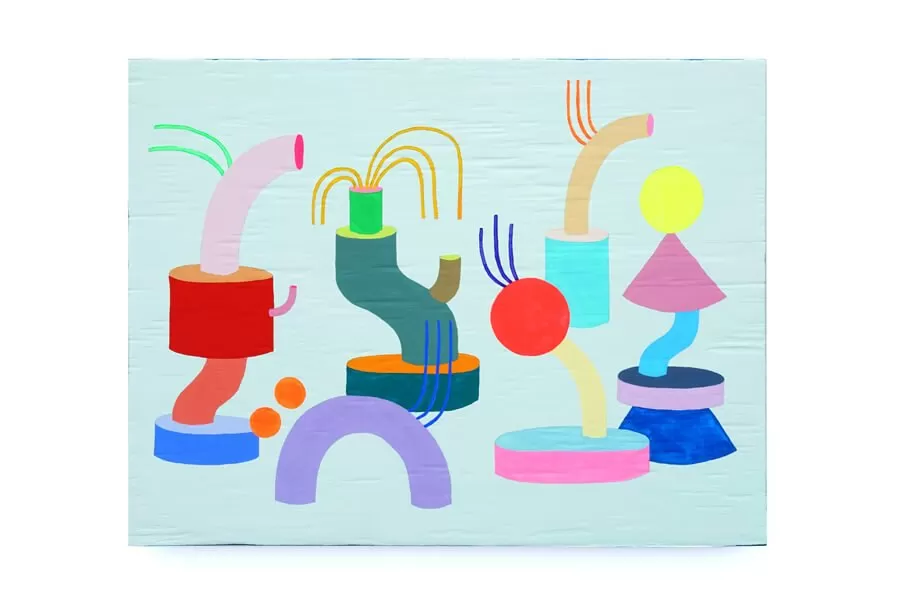As much as we choose to ignore it for many of us, life has turned into a hamster wheel stuck in a vicious cycle of work and grown-up responsibilities. That we never seem to find time for the fun things in life. We are getting lost somewhere in between childhood and adulthood; where we presume that playing is childish.
Frequently forgetting children learn best when they are playing, and the same principle applies to adults. Through the use of play, it is possible to acquire new skills, stimulate our minds, boost creativity as well as nourish our problem-solving skills all when we’re in a relaxed, playful mood.
For Brooklyn based artist duo Adam Frezza & Terri Chiao also known as CHIAOZZA (rhymes with “wowza” or “yowza”). Art is a physical experience as much as a conceptual one. Their work explores the lines between the natural and imagined worlds, through an integrated relationship between colour, structure and play.

We love working with paper, paint, wood, and paper pulp. We often use paper pulp as a finish material on an armature, giving sculptures a soft yet rigid textured appearance
CHIAOZZA
Representing their findings in incredible lifesize installations, sculptures, paintings, and design adorned in vibrant colour palettes that bring a wonderful sense of depth and space to their work.
And have exhibited their collaborative work in solo exhibitions in New York, Philadelphia, and Los Angeles, including a variety of art and design venues internationally. The pair have also produce artistic collaborations with prestige brands including Ikea and Hermès.
Art Plugged caught up with CHIAOZZA shortly after their Gemel exhibition at New York’s Launch F18.
Q: First things first, why do you do what you do?
A: We cannot imagine doing anything else.
Q: What is your inspiration?
A: We are inspired by the natural world. Immersion in places of wonder, such as a forest, river, or field of boulders, washes our minds, refreshes our senses, and shifts our perspective. We can turn our attention to very internal feelings, such as a feeling of lightness when floating in water, and to very grand feelings, such as the energy of time in old trees and rocks.
We are also inspired by the evolution and expression of human invention, particularly in architecture and utility. We love visiting a new hardware store and exploring utilitarian objects we’ve never seen before, or meandering through the side streets of a city together. Our inspiration shelves at the studio are lined with gemstones, corals, and driftwoods carefully collected next to particularly attractive pipe-fittings, dried out citrus fruits, and globs of material leftover from previous projects.
Q: What is your creative process?
A: Many of our projects start from dialogue and observations about the world around us. In the case of “Gemels,” we were spending a lot of time in an apple orchard in the wintertime, and the shapes of the dark trees against the white snow and grey sky was very stark and sculptural. Long, thin branches shot out of the limbs, growing straight upwards.
The grafted nature of many of the trees created segmented trees where one apple tree species grew from the truncated stump of a different apple tree species. We started drawing simplified forms of these hybridized trees and branch shoots, playing with the geometry and imagining other kinds of growths emerging from the forms. This is where the ideas for the new series started. It’s been fun to evolve these initial ideas through painting and sculpture, and we can imagine an endless evolution of “Gemels” over the course of a lifetime.
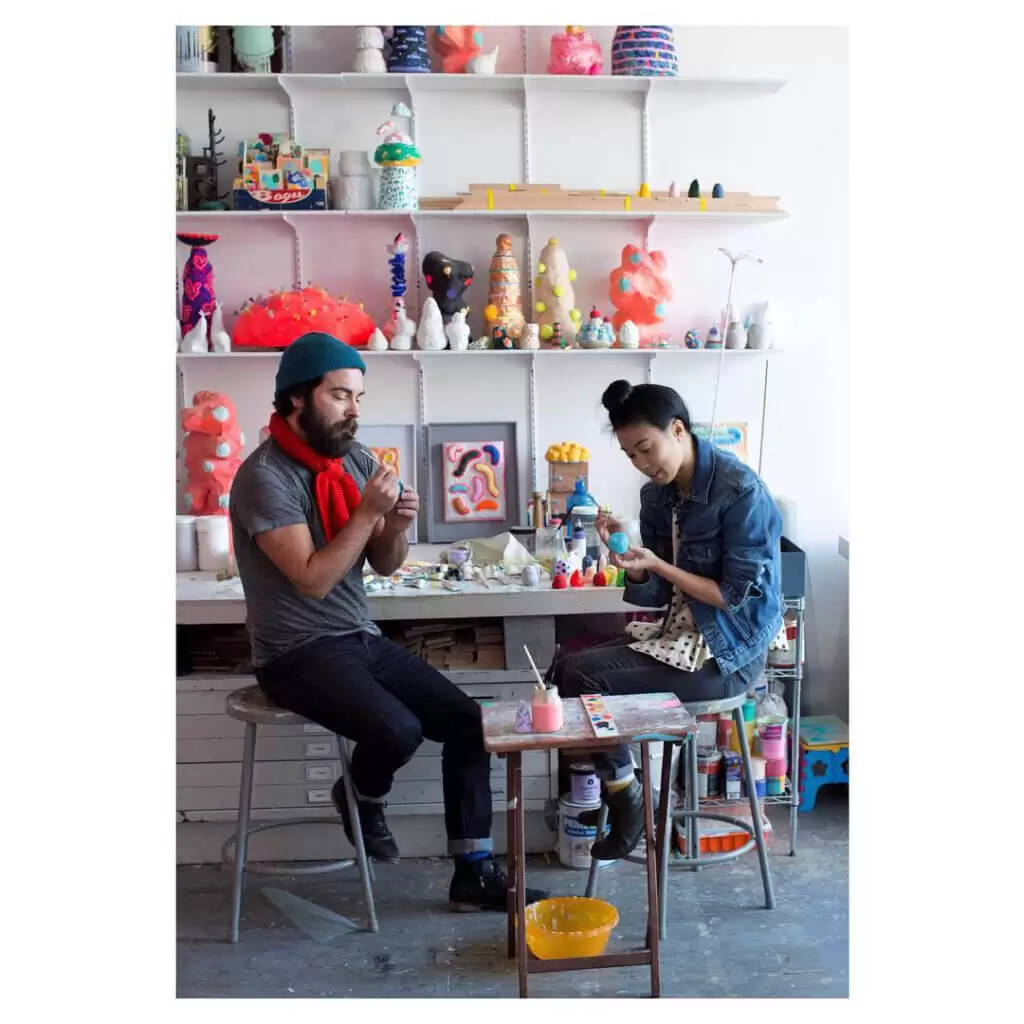
Q: Which is your preferred surface for working on?
A: We love working with paper, paint, wood, and paper pulp. We often use paper pulp as a finish material on an armature, giving sculptures a soft yet rigid textured appearance. We also love acrylic paint on wood or board. Wood offers a warm, sculptural substrate for the matte acrylic paints we like to use.
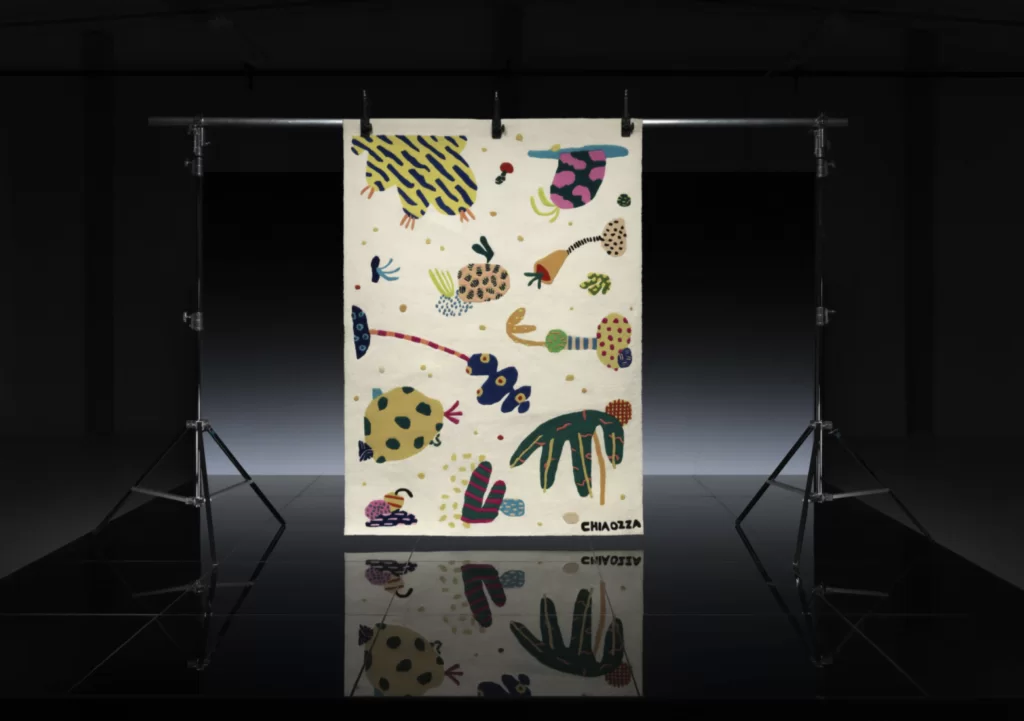
Q: What would you say is an integral part to the work of an Artist?
A: Time, patience, a willingness to experiment, and an endless commitment to evolve and follow through upon our ideas.
Q: What is the reason behind your use of play and craft in your work?
A: When we first met, drawing games and cooking were a way to get to know each other and spend time together. These activities gradually led to more and more experimentation together, leading to a collaborative language that echoes in our creative process. When we play, we tend to focus on exploration, collaboration, imagination, and questioning, much like a meandering conversation or a game of blocks.
The emphasis on craft stems from a strong interest in how something is made as much as what is made. We want our works to be appealing when viewed from afar and also close up. That being said, we recognize that we are not “fabricators” of our work, and our hand is often very present in the construction of the work, giving a slight wobble that we embrace. We enjoy working with processes that are harmonious, safe, and satisfying, which is partially why we work with certain materials more than others – paper, wood, and acrylic paint are relatively easy to work with, extremely versatile, and we love their tactility.
Q: How do you know when a piece is finished?
A: A piece is finished when we cannot imagine another move that would make it better.
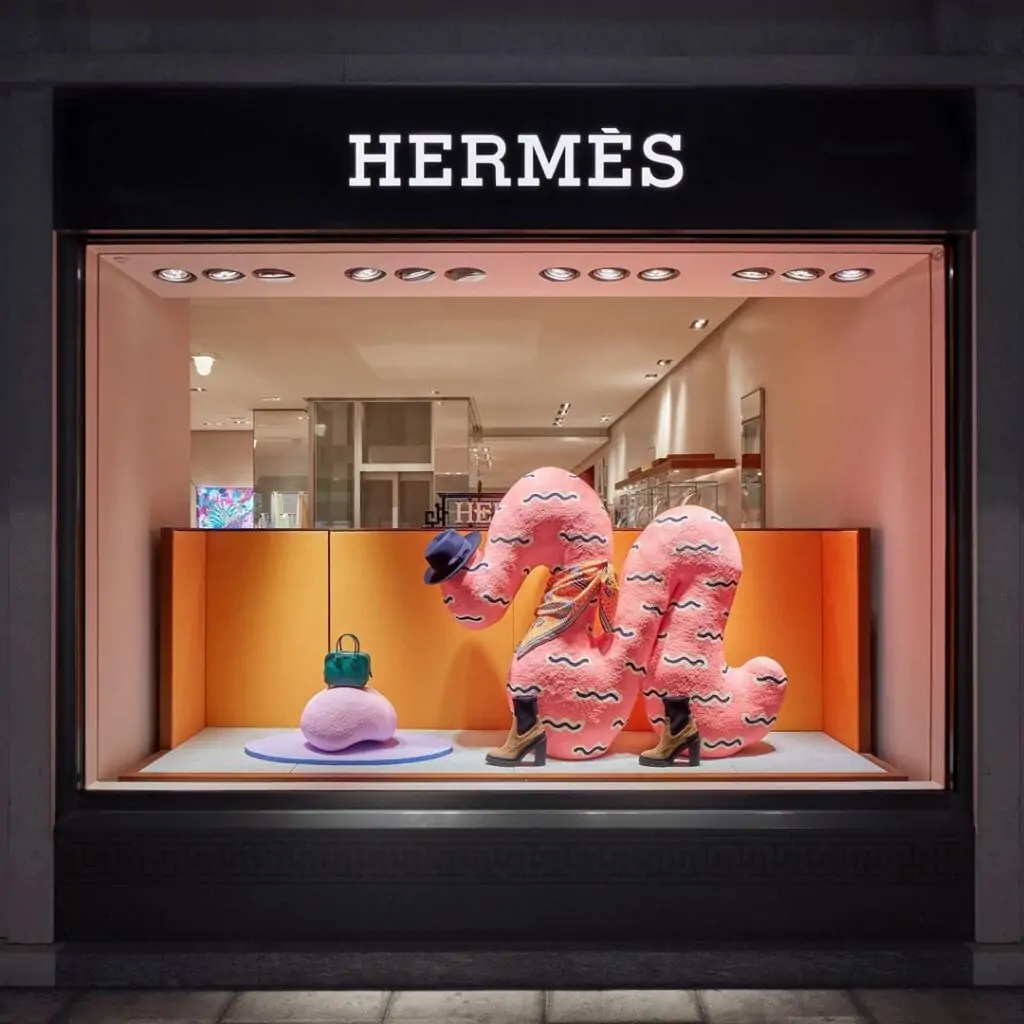

Q: How did you feel when you did your first solo exhibition?
A: Our first exhibit together was at Wave Hill in the Bronx. We were absolutely thrilled and humbled to have the opportunity to create an immersive environmental installation referencing a small model we had made. It was a fantastic learning experience and one we continue to learn and grow from years later.
Q: What is your favourite piece from your collection?
A: One of our favourite art pieces in our collection is a painting of a lounging crocodile by Jonathan Edelhuber. It was one of our first artwork purchases together, in 2017, at a Children’s Museum of Art auction that we co-curated. Another piece we would never part with is one of our first collaborations together – a model of a tree house where we constructed tiny paper plants together. These 1” tall paper plants were the beginning of our aforementioned explorations in paper mâché, paper pulp, plant-inspired forms, and immersive environments.
Q: What is the most rewarding thing for you about being a part of the Art Industry?
A: Getting to do what we want and love to do, with people we love, everyday 🙂
Q: Is there anything that worries you about how social media is affecting the promotion of artists?
A: The existence of social media allows people a small window into the lives of others. The experiences people have using social media are extremely personal and as varied as people are unique. We have learned about so many fantastic artists via social media and value the visual aspects of platforms like Instagram. Of course, social media can be a LOT of noise and we try to keep our focus on the physical world. A photograph is one form the work can take; ultimately we aim to make works that resonate in real time, outside of the screen.
Q: In your opinion, do you have any advice for artists on how to manage their social media
image? Or does it even need managing?
A: Stay kind and true to yourself and be what you want to see in the world. We are all captains of our own ships sharing the open seas together.
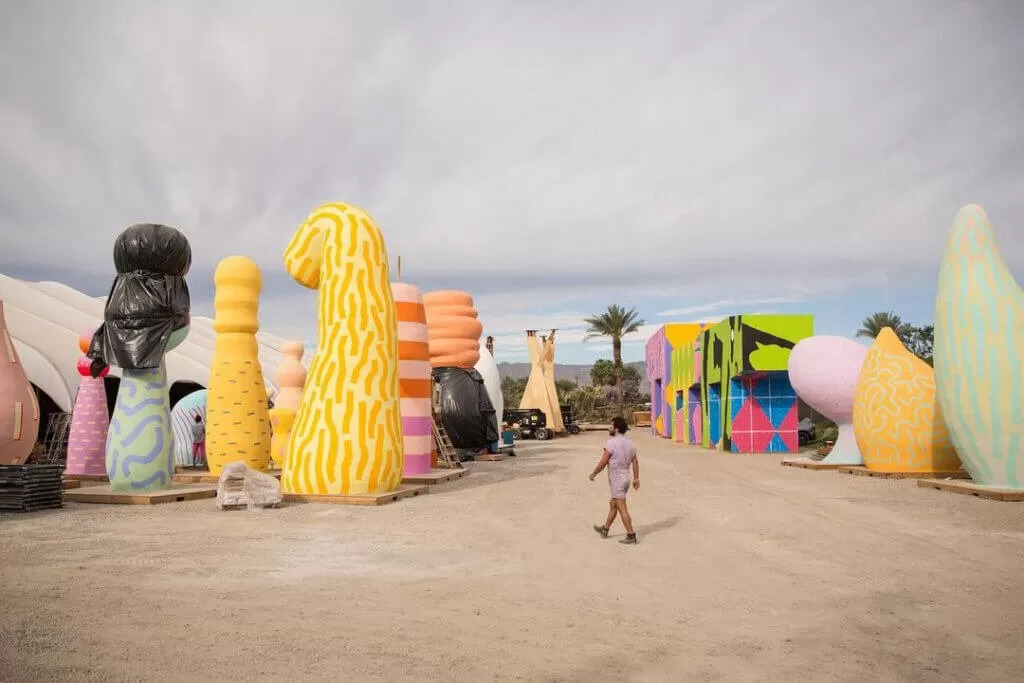
Chiaozza at Coachella back of house process shot 2017 – credit @colindouglasgray
Q: Do you have any advice for artists starting and don’t know where to begin?
A: Take your doodles seriously. A fleeting, seemingly silly thought could become the fuel to a lifetime of work. Make iterations of small ideas. Make more iterations. Keep working. Be patient. Enjoy the small discoveries. Don’t wait for the next wave of inspiration. Make work that honors your small discoveries. Don’t rest too long on any accomplishments. Continue to pay attention to those fleeting, silly ideas. Recognize your preferences and needs when it comes to your work. Edit. Make more work. Work smarter AND harder;) Have fun with it.
Q: What would you say is the best way of getting your art noticed in the age of the Internet?
A: Be yourself. Over and over and over again.
Q: Are there any places where you feel Art and Technology really shouldn’t overlap?
A: This is a big question and could be explored in many long essays and bodies of research J
To give a brief response: Art and technology go hand in hand – art may be the vision, the ideal, or the imagination of an idea, and technology can be understood as the application or development of the idea through craft and process. We continue to remind ourselves that we have the power to use all our facilities together to create objects, environments, and relationships that are beautiful and meaningful, made possible by the joint evolution of art and technology.
However, neither art nor technology is a substitute for human-to-human or human-to-nature experience.
There is a very real fear of arriving to a future like what is depicted in science fiction narratives, where the human, the humane, and the compassionate is replaced with the machine, the autocratic, and the indifferent. Sometimes when art investigates the possibilities of technology, those discoveries, commentaries, and observations are at risk of being misconstrued as a proposal or a prophecy rather than as a warning or as an exploration. This is why the “reading” of work is just as important as the work itself; we must continue learning how to read art and interpret its significance in a historical trajectory, a contemporary moment, and a malleable future.
https://www.instagram.com/chiaozza/
https://instagram.com/launch_f18
http://www.launchf18.com/viewing-room/chiaozza
©2020 CHIAOZZA, LAUNCH F18, Hermes, Ikea, Michel Giesbrecht, Colin Douglas Gray


